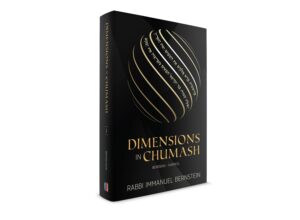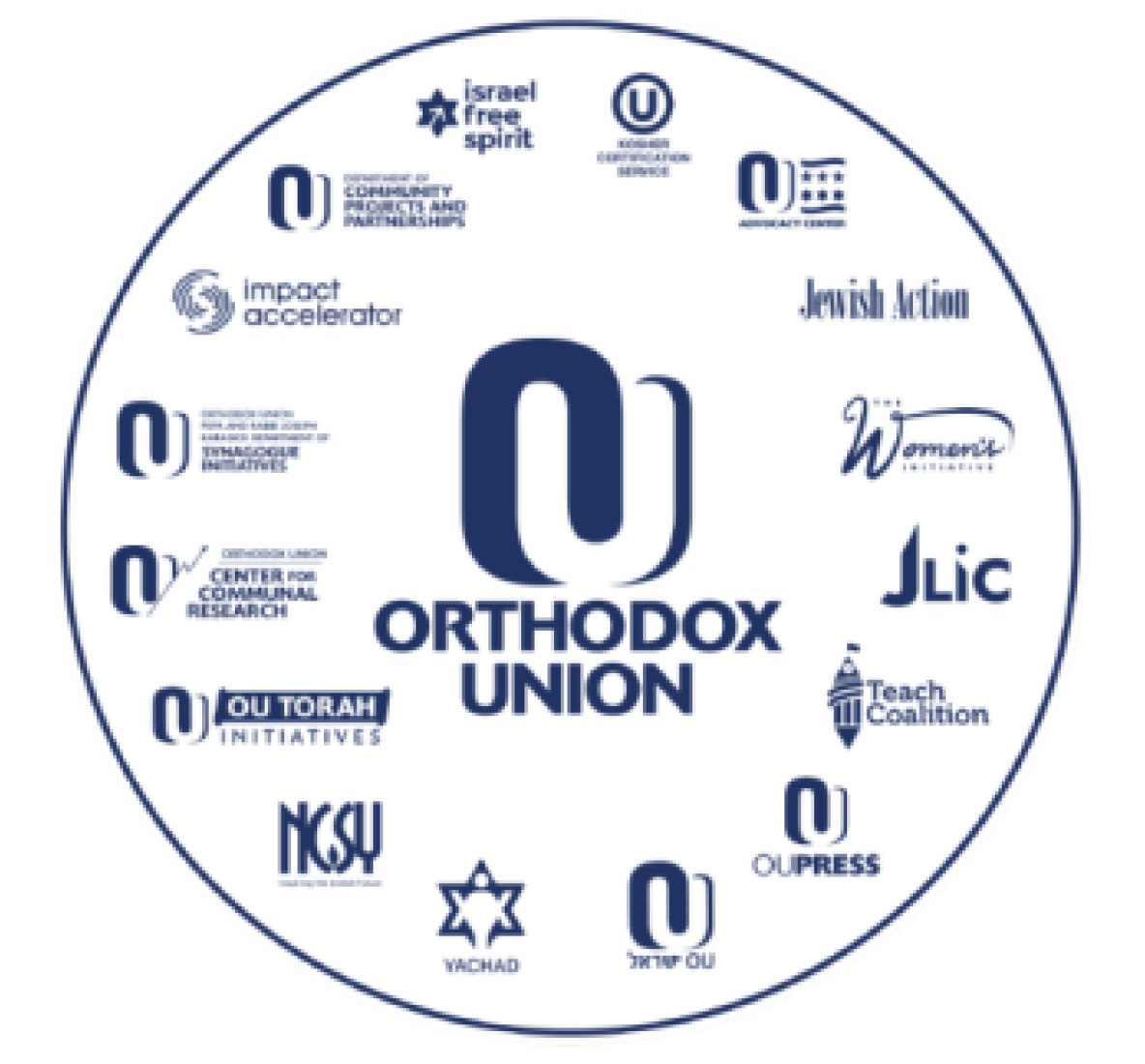
Dimensions in Chumash: Bereishis * Shemos
Rabbi Immanuel Bernstein
Mosaica Press
534 pages
As editor of the OU Torah web site, literally dozens of shiurim and divrei Torah cross my virtual desk each week and, baruch Hashem, I pick up a lot of Torah through osmosis. But as much as I would like to, the laws of physics prevent me from being able to follow every series we post. (I imagine that members of our audience are subject to the same limitation of there being only 24 hours in the day.) Accordingly, there are only a few series that I follow regularly as part of my personal seder. One of these is Rabbi Immanuel Bernstein’s Dimensions in Chumash.
The reason I am such a fan of Rabbi Bernstein’s writing is his brilliant ability to mix depth with clarity. This is a combination that is sadly lacking in all too many approaches to Torah. Now Dimensions in Chumash is available in a handsome volume from Mosaica Press, featuring several essays on each of the sedras in the books of Bereishis and Shemos.
Traditionally, there are four manners of Torah exegesis, known by the acronym “Pardes.” These are pshat, remez, drash and sod, or the simple meaning, hints, exposition and secrets, respectively. In his introduction, Rabbi Bernstein says that most of the essays in the book “take place in the realms of pshat,” with others in the realms of drash, and even in remez. That may be but, having read the entire work cover-to-cover over the span of two weeks, it’s the pshat that stays with me.
Rabbi Bernstein stands on the shoulders of two giants: his father, Rabbi Isaac Bernstein ztz”l, and his uncle, Rabbi Yehuda Copperman ztz”l (often incorrectly Anglicized as “Cooperman”). Rabbi Copperman’s magnum opus was a work called Pshuto shel Mikra, which, as the title would suggest, focuses on the pshat interpretation of the Torah. Among his many published works, Rabbi Bernstein has served as the translator of Pshuto shel Mikra. His expertise in this area is apparent.
One problem with translating “pshat” as “the simple meaning” is that it gives the misimpression that it’s simple: you read the text and – Schön! – you’re done. In reality, it’s not so “simple.” Time and again, Rabbi Bernstein shows us obvious questions staring us in the face. For example, in parshas Tetzaveh, Rabbi Bernstein points out two obvious questions on Exodus 28:21: “The stones shall be on the names of the children of Israel – 12 on their names – engraved like a signet ring, each on its name.” (1) Why are the stones described as “engraved like a signet ring” when signets are engraved in the reverse so that the seals that they make will be read forward? and (2) Why does it tell us that “the stones shall be on the names of the children of Israel?” Weren’t the names on the stones rather than the other way around? There’s actually a rather elegant solution that answers both of these questions. (See if you can figure it out; I’ll share it at the end of the review.) It’s a pshat reading in the text, but we all miss it, so rather than “the simple meaning,” perhaps we should understand pshat as “the straightforward meaning.” Straightforward though it may be, it might occasionally be apparent only after working diligently to unlock the text. Luckily, we have teachers like Rabbi Bernstein to provide us with the necessary keys.
Rabbi Bernstein points out many such questions based on pshat reading. Why does the Torah use this word here? Why does the text repeat something it just said? Why is this section out of order? (There are even questions raised based on such things as the vowels and spaces.) The answers are beautiful and clearly presented, but the “wow” factor often comes from the realization that one has overlooked an obvious question despite having read the text umpteen times over the years.
Now, one might think that with the help of Rashi, all of our pshat questions will be cleared up. Not so! As Rabbi Bernstein rightly notes, many works have been dedicated specifically to explaining Rashi, whose entire approach is ostensibly pshat. But as we have observed, “pshat” is not necessarily synonymous with “easy.” Rashi has a standard approach and when he deviates from it, it cries out for explanation. (A sample question on Rashi: Why does he feel the need to tell us that the laws in parshas Mishpatim are from Sinai when he tells us on parshas Behar that all the laws in the Torah are from Sinai? What is he adding through this seemingly extraneous comment?)
In various chapters, Rabbi Bernstein addresses the interplay between pshat and drash, or between pshat and remez, so these realms of Torah study are indeed represented. To this reader, however, the area of pshat is where Dimensions in Chumash truly excels. One expects to encounter chiddushim in works of drash and remez, but to be blown away time and again in the realm of pshat? That is indeed exceptional. Dimensions in Chumash will greatly enhance one’s understanding of, and appreciation for, the weekly Torah portion.
_______________________________________
The questions were: (1) Why are the stones described as “engraved like a signet ring” when signets are engraved in the reverse so that the seals that they make will be read forward? and (2) Why does it tell us that “the stones shall be on the names of the children of Israel?” Weren’t the names on the stones rather than the other way around?
The Answer
The stones were indeed “engraved like a signet ring,” i.e., with the writing backwards. But they weren’t engraved on the fronts on the stones, they were engraved on their backs, with the result that the stones were “on the names.” In this way, the backwards writing could be read forward from the front of the translucent stones.
This is just one of numerous observations Rabbi Bernstein shares on the bigdei kehuna, along with many important lessons!
The words of this author reflect his/her own opinions and do not necessarily represent the official position of the Orthodox Union.



